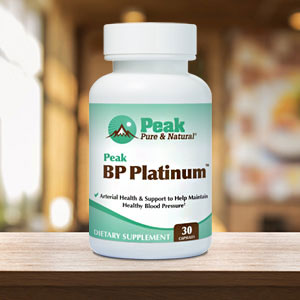Get Easy Health Digest™ in your inbox and don’t miss a thing when you subscribe today. Plus, get the free bonus report, Mother Nature’s Tips, Tricks and Remedies for Cholesterol, Blood Pressure & Blood Sugar as my way of saying welcome to the community!
The heart disease warning a mammogram shows

Heart disease is the biggest killer of women.
While one in 31 American women dies from breast cancer each year, heart disease is the cause of one out of every three deaths in women.
Shockingly, risk assessment tools for heart disease that are specific to women are sorely lacking.
But a routine medical procedure most women undergo at least yearly has identified a common denominator that could save more women’s lives…
It’s different in women
There are very real differences between the way heart disease affects women as compared with men.
For one thing, women have risk factors that men just don’t, such as gestational diabetes and endometriosis.
For another, women have smaller hearts and narrower blood vessels. This means that a woman’s symptoms can differ greatly from the “typical” heart attack symptoms experienced by men.
Finally, women are more likely to suffer from diseases that mimic a heart attack, says Dr. Michelle O’Donoghue, a cardiologist at Brigham and Women’s Hospital.
These diseases include takotsubo syndrome, also called “broken heart syndrome,” in which changes in the heart muscle resemble a heart attack, but there are no blocked arteries.
Mammograms could predict heart disease
A new study followed the mammograms of nearly 400 women for 18 years, looking for one specific finding: breast arterial calcifications.
We’re all familiar with arterial calcification, also known as vascular calcification, which can lead to atherosclerosis. However a similar buildup of calcium can occur within the middle layer of the breast’s arterial wall, showing up as white parallel lines on a mammogram.
The condition is benign, but this study found a startling correlation between women with breast arterial calcification and women who also had heart disease.
Women with breast arterial calcification were 23 percent more likely to experience a type of heart disease in which plaque buildup in the walls of their arteries limits blood flow from the heart to the body’s other organs — compared to just 13.9 percent in women without breast arterial calcification.
Microcalcification: A common denominator
This revelation gives women yet another good reason to get a regular mammogram. But, in addition to getting checked yearly, you can start lowering your risks right now…
Get off your duff. As a writer who sits for hours, I’m taking this one seriously. Researchers at Oxford University found that women of every age can reduce the risk of heart disease (and stroke) immediately and significantly by doing one simple thing: Exercising for at least 10 minutes, just 2-3 times per week.
Eat Mediterranean. An analysis of existing studies from just a year ago found that sticking closely to a Mediterranean diet was not only associated with a 24 percent lower risk of heart disease in women but a 23 percent lower risk of death.
Supplementing vitamin K2: Many experts believe calcification should be viewed as a contributor to the pathological aging process. That’s why an emerging group of vitamins is getting a lot of attention for their impact on this common contributor of unhealthy aging, particularly vitamin K2 and the subtype MK-7.
Low K2 levels are associated with calcification and an elevated risk of heart problems. Without adequate levels, processes don’t work optimally that help direct the calcium you take in regularly to areas it’s needed, like your bones.
Other factors can also affect the deposition of calcium in various parts of the body including:
Inflammation: Inflammation can damage tissue anywhere in the body. When it does, the body releases proteins that cause the calcium to bind together in clumps.
Calcium metabolism disorders: These can lead to hypercalcemia, which occurs when there is too much calcium in the blood.
Some autoimmune disorders: Because they can affect the skeletal system and connective tissues, they can cause calcification.
Editor’s note: There are perfectly safe and natural ways to decrease your risk of blood clots including the 25-cent vitamin, the nutrient that acts as a natural blood thinner and the powerful herb that helps clear plaque. To discover these and other secrets of long-lived hearts, click here for Hushed Up Natural Heart Cures and Common Misconceptions of Popular Heart Treatments!
Sources:
Breast arterial calcification could be warning sign of heart disease — Eureka Alert
Breast arterial calcifications linked to cardiovascular disease risk — Contemporary OB/GYN
Frequency, Type, and Volume of Leisure-Time Physical Activity and Risk of Coronary Heart Disease in Young Women — Circulation














